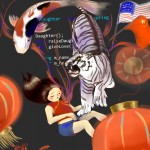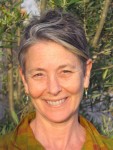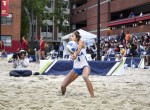Another day, another disgraced UCLA employee.
And the same tight-lipped university.
James Heaps, a former obstetrician-gynecologist at UCLA Health, was charged June 10 with sexual battery for his treatment of two patients in 2017 and 2018, to which he pleaded not guilty. A 2018 university investigation found that at least four patients made allegations against Heaps, and as of June 18, at least 22 other women have come forward alleging that Heaps sexually assaulted them during his employment at UCLA.
Chancellor Gene Block announced Heaps’ arrest and UCLA’s plans to review policies regarding sexual misconduct at clinical sites in a campus-wide email on June 10.
Block’s statement is a step up from UCLA’s previous lackluster responses to sexual assault cases.
But the bar for transparency should never be set so low.
UCLA knew about Heaps’ wrongdoings for more than a year, yet only broke its silence when he was legally charged and arrested – leaving the campus community in the dark. Beyond the clear lack of transparency, UCLA failed to implement adequate measures to protect patients, such as removing Heaps from campus while he was under investigation, which UC policy would have allowed.
Instead, the university let him continue to treat patients, who were unaware their doctor was an alleged sex offender. UCLA actively compromised its students’ and patients’ safety, leaving them vulnerable to sexual violence for six months.
And that’s exactly what happened.
A patient who saw Heaps in February 2018 – while he was still under investigation – filed a complaint nine months later alleging inappropriate sexual behavior from him during her appointment, according to prosecutors.
Communication in these cases is more than a formality – what the university does or doesn’t say directly affects the wellbeing of individuals on campus.
Block said in an interview with the LA Times that UCLA did not disclose the allegations against Heaps because the university wanted to wait until it had the full facts before making such a serious announcement. But UCLA remained silent even after it had completed its investigation into Heaps and found significant violations of UC sexual misconduct policies – making it hard to believe open communication was ever their top priority.
Informing the campus only when they couldn’t keep it under wraps any longer continues a pattern of deep-seated issues between the administration and the community it serves.
While most employers don’t automatically disclose when they report someone to law enforcement, UCLA has a responsibility to do so.
In fact, the federal Clery Act requires universities to inform those on campus about individuals accused of sexual assault if campus officials deem them to be a threat to the community. The U.S. Department of Education released a report earlier this year that Michigan State University violated the Clery Act by failing to warn its campus about former USA Gymnastics doctor Larry Nassar after student-athletes alleged he had sexually abused them.
And it’s safe to say that Heaps was a genuine threat – the university felt the need to terminate him and report him to the Medical Board of California twice in June 2018 and March 2019, respectively.
Block said in his email that the university’s first and highest obligation is to the communities it serves.
But as long as it stays tight-lipped, those communities will continue to suffer.






